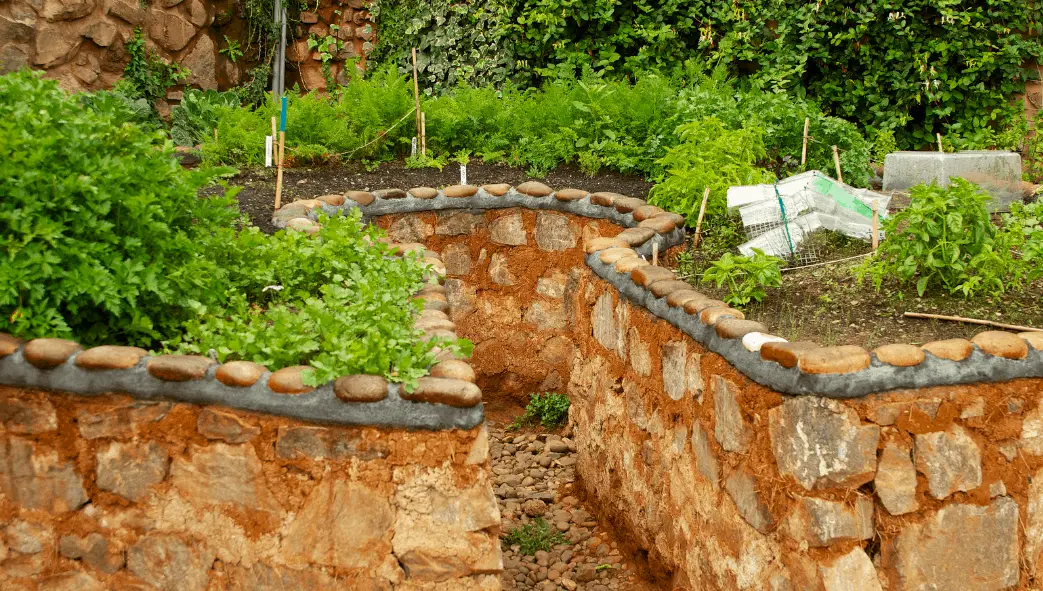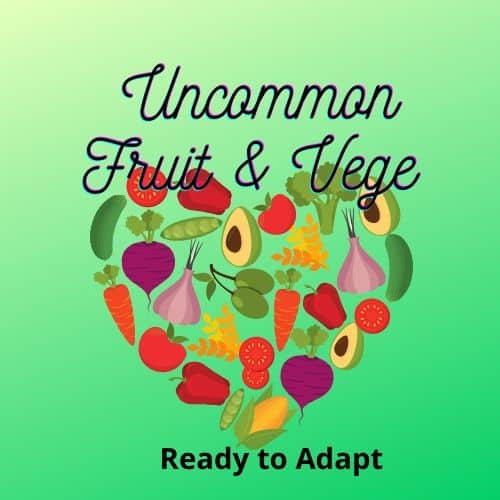Choosing and applying the right shapes and patterns in a landscape creates beauty but can also save space, reduce the work required to maintain it, enhance wildlife habitat and help bring about balance for the gardener and nature.
The shape of a garden determines how much of its area can actually be used to contain plants as opposed to paths that let us reach them. Some regard garden paths as a necessary evil but I regard them as part of the greater design. Your paths can for example be water collecting or they can be places to that take advantage of edges. Unmanaged paths on the other hand can become weedy and compacted earth that is really valuable real estate that could be devoted to a rich polyculture of edibles and sweet scented blooms. Fortunately with the use of clever design and pattern we can maximize the planting area and minimize the land sacrifice.
Changing the shape of a garden bed through the clever use of patterns can reduce the area lost to paths. The most basic garden bed contains single rows of plants seperated by a path between each row. In this layout the path consumes almost half of the area as shown below.

For ease of understanding, there are 4 different plants displayed each roughly 1 metre in diameter and laid out in 1 metre rows. In this example, there are 40 plants in a 70 square metre garden plot. The area taken up by path is 30 square metres.
By simply changing the layout we can place taller plants at the back and lower ones to the front or we can make one row taller by raising the bed. This reduces the path to 10 square metres and decreases the size of the garden by 20 square metres. Still the original 40 plants.

But if we think about our pattern design a little more we can see that the use of linear rows and right angles is limiting us even further. So lets look at changing it up a bit more.

If we bend that rectangular bed into a horseshoe shape now we have a keyhole style circular design. This will greatly reduce the path area even further to just over 8 square metres and we have also increased our planting area significantly. The Circle has a diameter of 10m from outer edge to outer edge and we have cut an inner circle is 3 metres in diameter and a 1 metre cut out for the path means we have increased our planting area back to roughly 70square metres and through tiered placement, we can reach our plants from the inner circle or the outer. Notice that our 40 plants have also increased to 87 plants due to the ability to reach everything.

But wait we did increase our overall measurements by going with the 10 meter diameter circle so for thoroughness we will go back to a 7 metre diameter but this time we will use raised tiers – so rather than it being 2 dimentional think in 3D with each different circle starting from the outside being the lowest will raise up 500mm or 1/2 a meter to the next circle. This gives us approximately 40 square meters of planting space that is accessible from any position around the outer circle. We have now achieved 57 plants in this configuration with the lighter green plants being only 1/2 metre wide and high. The addition of stepping stones shown in black provides extra access to the inner tiers as required.
Keyhole beds are aesthetically pleasing as well as mathematically better use of space. Bringing curves into a garden eliminates the agricultural quality of straight lines for as far as the eye can see. With the exception of fruit falling to the ground and other gravity driven phenomena nature never takes the shortest route and neither should we. Instead, nature meanders, drifitng in graceful but efficient undulations from here to there and back again. I personally think it us and our need to be straight to the point and arriving in the shortest possible time that has made us want to draw straight lines where there are none.
In our gardens we must meet mother nature on her terms, for if we don’t she will impose them on us in one way or another. Just as long straight highways put us to sleep so too linear gardens are boring. Curves and circles bring surprise around every corner and creativity in how to fill the spaces, it is just a bonus or rule of mathematics that they are more efficient as well.
In addition to the already obvious benefits of keyhole garden designs is that we orient our central path to South in Northern Hemisphere and North in the Southern Hemisphere we can locate tall plants such as Trees or Sunflowers at the back of the beds. We can then stagger the planting towards the opening and you have built an effective sun trap that keeps your plants warm. This warm microclimate is a great place to raise tender or heat loving varieties of plants that you may otherwise not be able to grow.
Watering can be as simple as a standard sprinkler placed in the centre to cast the entire area or better yet lay out some drip irrigation on taller tiers and allow them to gravity water your lower ones.
There are multiple variations on the keyhole bed design and it can be as elaborate or simple as you like. The Mandala Garden is a modified keyhole.

Why not stack functions and include a compost tower or worm tower in your keyhole design. Or build a raised keyhole garden for a disabled friend or family member. You are only limited by your imagination.




